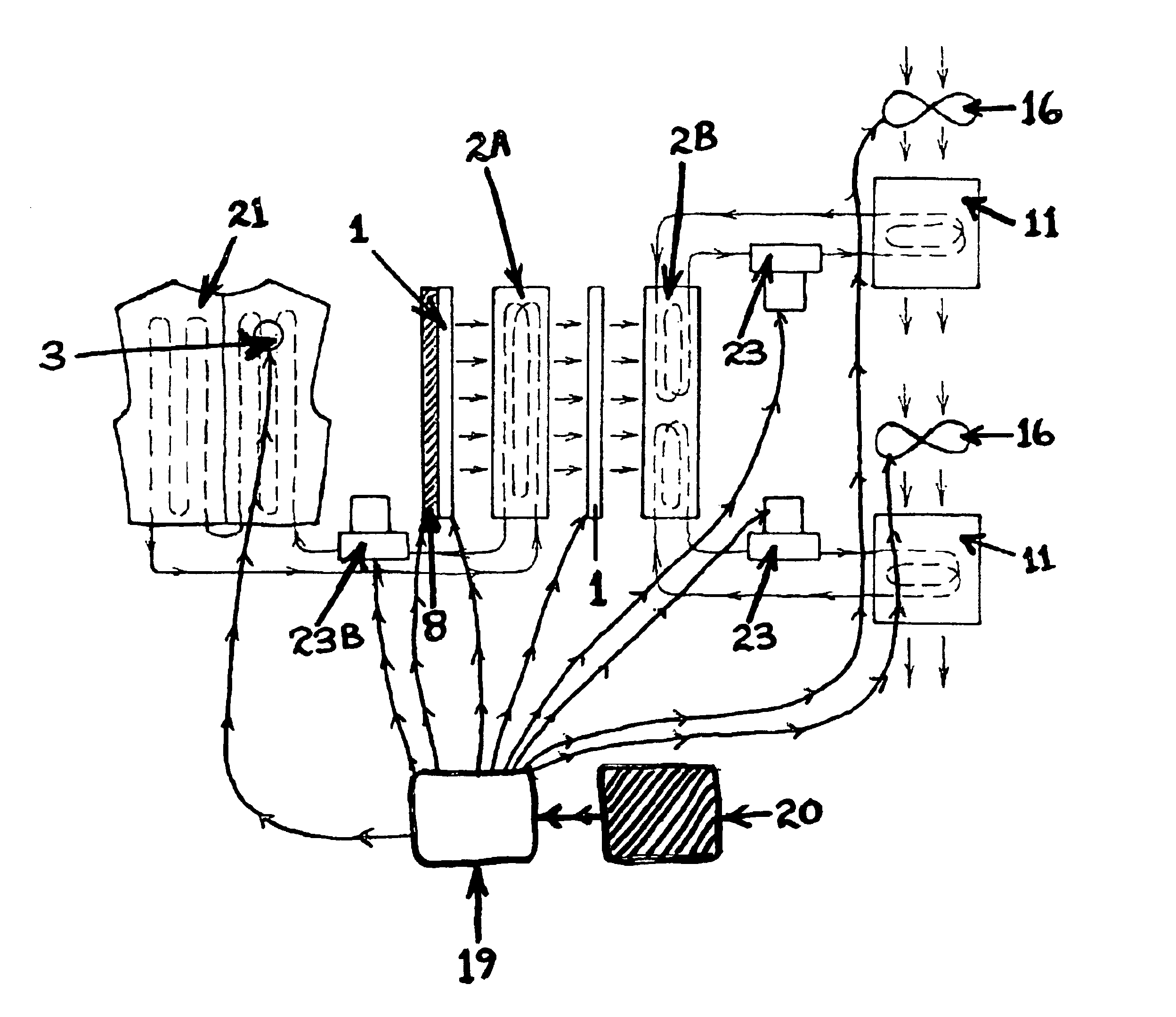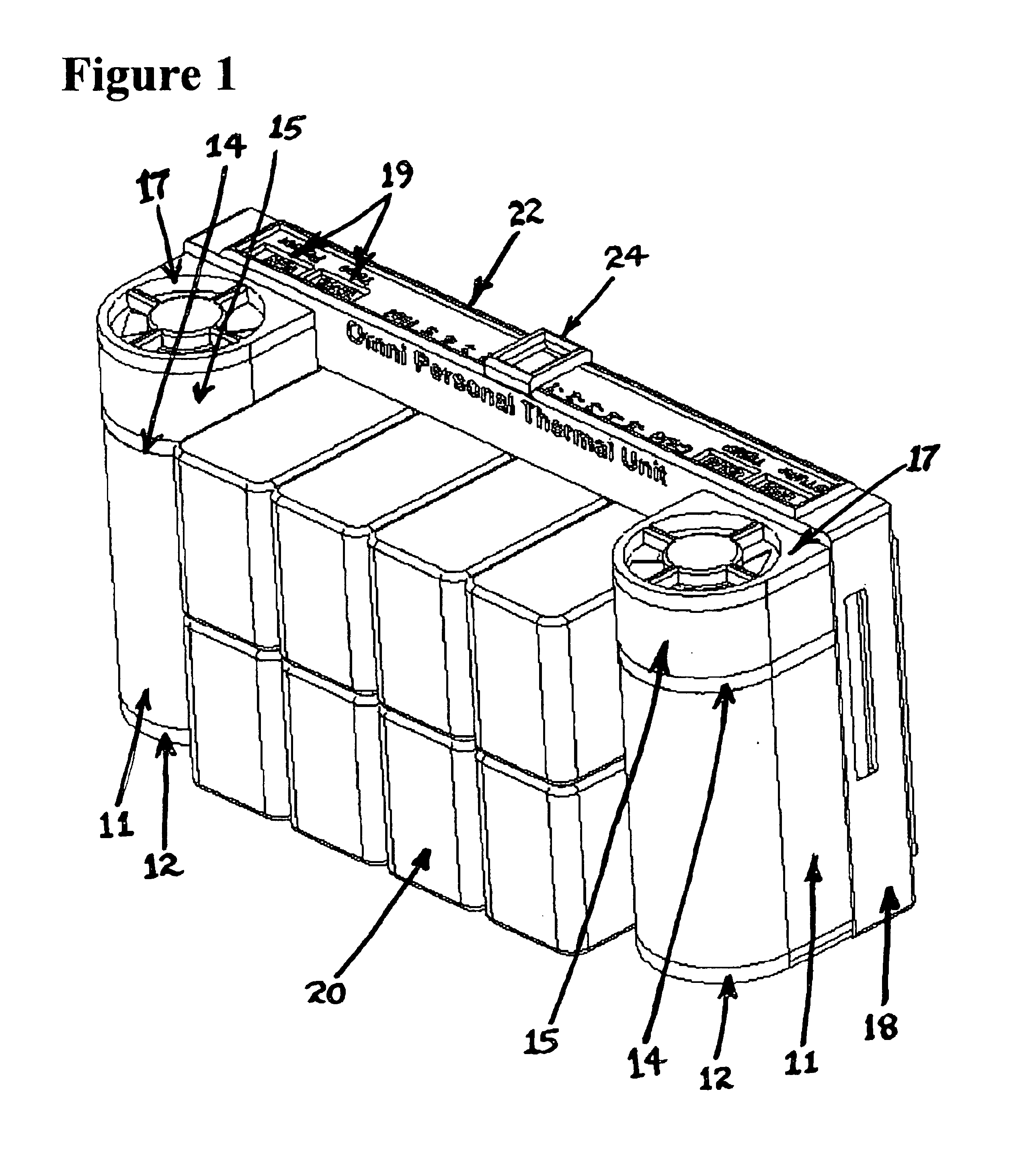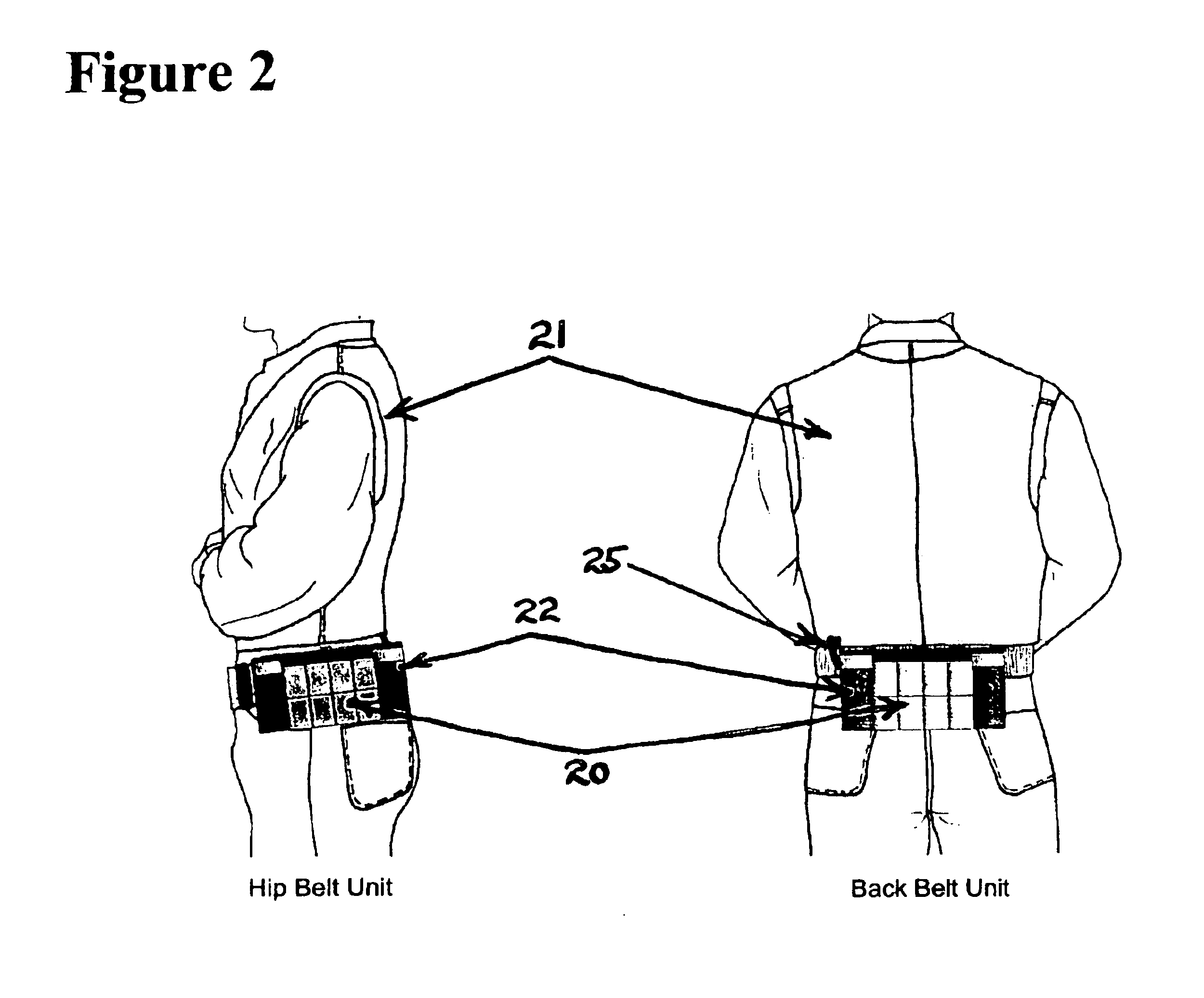There are no acceptable prior art heat stress and
cold weather exposure relief systems for individuals, such as soldiers, operating in hot and cold environments for extended periods of time.
Heat stress can result in sweating, fatigue,
dehydration, dizziness, hot
skin temperature,
muscle weakness,
increased heart rate, heat
rash,
fainting, injuries,
weight loss, heat
stroke,
heat exhaustion, and even death.
The risk of heat stress is even greater for those wearing nuclear, biological and chemical (NBC) protective clothing, as well as
aircrew personnel wearing flight gear.
While a portable, lightweight, low power, personal cooling and heating
system can reduce heat stress, reduce the adverse effects of cold exposure, improve performance, and reduce
water consumption, current active and
passive cooling systems fall short of meeting the minimum requirements for an optimal
system.
The prior art, however, seems to be devoid of a combination cooling and heating
system functioning with any significant efficiency over longer periods of time.
The current
active cooling and heating systems, however, are too heavy, bulky, inefficient, and are effective for only a limited amount of time.
These devices also consume too much power and use potentially dangerous materials such as
lithium sulfur dioxide batteries or R134 a
refrigerant.
Passive cooling and heating systems use packets containing
phase change chemicals, water or gel that require
refrigeration, freezing or heating before use are not suitable to meet the needs of a user where
refrigeration, freezing or heating of the
passive cooling or heating components are unavailable such as in military field operations in hot, cold or combined hot and cold climatic conditions.
The ice must be changed every 30 minutes, and users such as pilots and field deployed soldiers may not have access to ice to replenish the system.2. U.S. Army PVCS (Portable Vapor Compression Cooling
System) Problems: The total system is much too heavy (27 pounds); uses potentially dangerous
lithium sulphur dioxide batteries, can't use vapor compression on non-level surfaces such as ships; R134a containers can rupture in high temperatures, exposure to liquid or vapor
refrigerant can cause
frostbite, high exposure to fumes can cause
central nervous system depression, irregular
heartbeat and suffocation.3. U.S. Army ALMCs (Advanced Lightweight
Microclimate Cooling
System) Problems: A
voltage delay phenomenon can cause
lithium sulphur dioxide batteries not to start especially after storage; the batteries can vent toxic sulphur dioxide gas that can cause
respiratory distress and burns if there is accidental electrical charging,
puncturing or application of heat.
Problem: According to Roger Masadi at the Natick Soldier Center, typical desiccants only adsorb about 20 percent of their weight in water, and the cooling density is approximately the same as ice.6. NASA and U.S. Air Force (APECS)
Aircrew Personal
Environmental Control System Problem: This system is too bulky for infantry soldiers.7. Life
Enhancement Technologies Problem: The
ice water mixture for the cooling unit must be replenished.
While each of these prior art personal cooling and heating systems may fulfill their respective particular objectives and requirements, and are most likely quite functional for their intended purposes, it will be noticed that none of the prior art cited disclose an apparatus and / or method that is portable, rugged, and lightweight and that can be used in any orientation or used as a belt-mounted system or a backpack, to meet the
operational requirements of the user.
Also, the prior art cannot provide several continuous hours of operation at a rate of 700 to 1000 BTUs of adjustable cooling or heating per hour.
 Login to View More
Login to View More  Login to View More
Login to View More 


